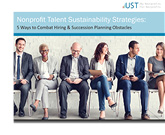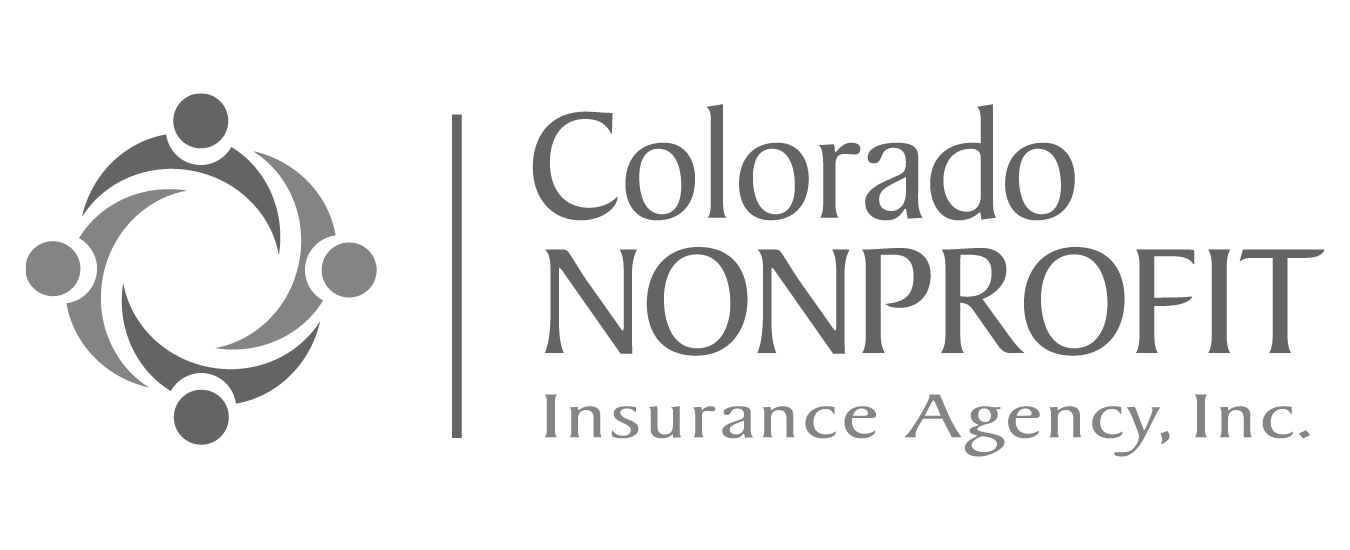
Question: We’ve seen an uptick in complaints from employees. Is this cause for concern?
Answer: The mere fact that you’re getting more complaints than normal isn’t necessarily something to worry about. The increase in complaints could be a sign that there are now more issues that require your attention, or it could be a sign that your employees are—for some reason—feeling safer speaking to you about their concerns.
In and of themselves, complaints can be a good thing because they inform you about matters that may have escaped your notice and they indicate that your employees trust you to resolve those matters. The last thing you want is for employees to keep their concerns to themselves or vent about them to their colleagues (or the entire internet). You can’t solve problems you don’t know about, and unaddressed problems can quickly turn into bigger issues. Knowing what’s troubling your employees is essential for effective risk management.
Listen to what your employees have to say, thank them for bringing the matters to your attention, keep the lines of communication open, and do what you can to resolve the issues. If several complaints relate to a single issue (or person), you may want to give that issue more attention or urgency. And, of course, any complaint that suggests there may be harassment or discrimination should be dealt with promptly and thoroughly.
While dealing with the additional complaints, keep in mind that if you can solve or improve the problems that are being brought to your attention, you’ll have happier—and likely more productive—employees.
Q&A provided by ThinkHR, powering the UST HR Workplace for nonprofit HR teams. Have HR questions? Sign your nonprofit up for a free 30-day trial here.
In an Effort to Provide More Robust and Readily Accessible HR and Unemployment Resources to the Nonprofit Sector, UST Launches a New Website that Acts as a One-Stop-Shop for Workforce Solutions.
Santa Barbara, CA (May 4, 2018) – The Unemployment Services Trust (UST), a program dedicated to helping nonprofits ensure compliance and protect assets, today announces the launch of their NEW website: www.chooseust.org.
For 35 years, UST has helped nonprofit employers to better manage their unemployment funding, maintain HR compliance and maximize employee bandwidth. WIth UST’s recent revamp of the UST Support program, as well as the latest addition of UST’s new insurance program, UST Secure, UST decided to give their webiste a fresh look and feel to mimic their evolving nonprofit services.
“We hope this enhanced website can serve as a one-stop-shop for nonprofit organizations nationwide—helping them to streamline day-to-day operations and stay on top of the latest best practices,” says Donna Groh, Executive Director of UST.
This new website will provide nonprofits the ability to readily navigate the many UST resources and tools that can help them reduce overhead costs, manage their claims and access HR & outplacement tools.
To determine which UST programs will best suit your needs, please submit a free Cost Analysis form today. (Use Priority Code “2018PR-LAUNCH” to expedite your request).

Leaders in the nonprofit sector can share in the same sentiment when it comes to concerns surrounding the day-to-day operations of a nonprofit organization—especially with marketing. While marketing can affect many aspects of your organization, the most vulnerable could be your reputation and financial well-being. In the light of such concerns, some nonprofits have managed to achieve marketing success by using the services of a third-party marketing firm. While this option is not feasible for all nonprofits, having some type of marketing strategy in place is crucial for your organization. Creating a well-organized and strategic marketing plan that remains true to your mission and keeps your organization within budget, will bring your nonprofit to new heights.
While there are many effective marketing strategies, discovering which one is beneficial for your organization is key to ensuring you receive the most from your efforts. Learning how to use analytics, and accessing different testing methods can help point you in the right direction of what your organization may need to get started on its marketing journey. Also, integrating the latest tools into your website and social channels will help your organization stay relevant and current.
A good marketing plan is interlined from top to bottom. For each goal, there are objectives, every objective has strategies, and each strategy has tactics. Without good tactics, a strategy will not successfully complete an objective, rendering the success of a goal. A true marketing plan should employ the right mix of experience with critical thinking.
If your nonprofit has allocated a portion of their budget towards marketing, they’ll typically put it towards “outbound” marketing, i.e., email marketing, newspaper advertising, and press releases. Where “inbound” marketing, i.e., social media marketing, can be beneficial for nonprofits to generate leads, it can be difficult to turn these leads into donors. With marketing being such an essential part of the nonprofit framework, it requires participation from all aspects of the organization in order to see any return from such efforts.
Nonprofit marketing is an ongoing commitment that requires the development of new ways to keep your following engaged and willing to donate. Nonprofits are well-positioned to tell stories that have the ability to make an impact. By creating a comprehensive content marketing strategy, realigning your marketing dollars, and ensuring your goals, objectives and tactics are in place, your great stories will go further – attracting and motivating your audiences to do even more.
Question: Which employers are required to maintain records of illnesses and injuries under the Occupational Safety and Health Administration’s (OSHA’s) recordkeeping and reporting regulations?
Answer: Employers that had more than ten employees at any time during the last calendar year are generally required to prepare and maintain records of serious occupational injuries and illnesses using the OSHA 300 Log. OSHA provides a partial exemption from the recordkeeping requirements for employers who had ten or fewer employees at all times during the previous calendar year and employers in certain low-hazard industries.
To determine if your company is required to prepare and maintain OSHA records, you will need to find your industry’s North American Industry Classification System (NAICS) code number using one of these methods:
Once you have identified your industry’s NAICS code, you can use the Partially Exempt Industries Table to determine if your industry is exempt from the recordkeeping rule.
Important: States with OSHA-approved plans may require employers to keep records for the state, even if employers are within an industry that is exempted from doing so under OSHA regulations.
Unless your facility is municipal, state, or federally-owned, it is subject to OSHA regulations as long as it has employees. Having non-profit status or a small number of employees does not exempt a business from OSHA compliance
Q&A provided by ThinkHR, powering the UST HR Workplace for nonprofit HR teams. Have HR questions? Sign your nonprofit up for a free 30-day trial here.



Having recently joined UST as a Customer Service Representative, Jenny is excited to now be working with nonprofit organizations. As for volunteer work, she’s a sucker for animals and spends as much time as possible supporting the cause during her downtime.
Outside of work, Jenny enjoys spending time with her boyfriend and her fur baby, Diego. They often venture out on hikes at the beach or in the hills and she and her boyfriend fancy exploring new restaurants and breweries when time allows. Jenny’s a huge baseball fan, the San Francisco Giants are her team of choice and she loves the fun rivalry sparred in a city of Dodger fans that just happen to include her boyfriend – that can make for some interesting dinner conversation. She also enjoys cooking and hitting the farmers market. She even worked as a baker/chef in a delicatessen for some time.
She’s a self-proclaimed adrenaline junkie and her enthusiasm for adventure has led her on some pretty impressive journeys. Just to name a few, she’s gone skydiving in Australia from 16,000 feet, repelled down mountains, did a 90-mile cattle drive on horseback mustering 200 head of cattle in Australia for two weeks straight, and rode Horseback through the Loire Valley in France that led to her and her family being in an Absolut Vodka ad – we have a celebrity in house. Not surprisingly, she has an extensive list of places she’d like to visit that include Greece, New Zealand and Italy. She’s already been to Australia three times and actually hopes to one day live there.
Jenny seems like an extremely busy person but she finds her Zen on the beach listening to the waves while reflecting on the things going on in her life. Something we should all get in the habit of doing.
Are you an adventurous soul? Share your stories with Jenny @USTTrust with the hashtag #MeetUSTMondays!

Established in 1989, the Colorado Nonprofit Insurance Agency has been a UST partner since 1983. Having recently joined forces with HUB International, the agency is devoted to serving the 501(c)(3) nonprofit community by providing affordable insurance designed exclusively for nonprofits. Originally established as a benefit to the Colorado Nonprofit Association, the organization has grown in leaps and bounds since its inception.
The Colorado Nonprofit Insurance Agency negotiates and contracts with insurance carriers, evaluates products for quality and cost, researches and develops new products and concentrates on educating their members. A full-service insurance agency, CNIA offers a wide range of products including liability, property, Workers’ Compensation and employee benefits such as health, life and disability coverage. Additionally they provide employee benefit programs ranging from flexible spending accounts to wellness programs.
Serving the Colorado nonprofit community with their insurance needs is all they do! Dedicated to helping 501(c)(3) charitable organizations for over two decades, the Colorado Nonprofit Insurance Agency has many years of experience helping nonprofits determine the best insurance coverage needed to protect their unique needs. For more information on CNIA visit http://coloradononprofitinsurance.org/.

But, Florida was able to make their final loan payment of $9.2 million on Tuesday, May 21st.
Using more than $3.1 billion from employer tax collections and $360 million from an issued Federal Unemployment Tax Act (FUTA) tax credit, Florida became the 14th state to successfully pay off their debt. The remaining states still possess a cumulative outstanding balance of over $21 billion, with an added interest of over $464 million—all of which must be paid off in order to restore their Trust Fund balance.
With their balance finally at $0, and their unemployment rate down to 7.2 percent, Florida is now able to focus their energy on job creation and economic improvement strategies.
While there was no specified payment schedule for the loan, Florida has progressed a lot quicker than some of the larger states. 22 states still remain in debt, but Florida paves the way for economic salvation. And provides a sense of hope to those seeking employment.
Want to learn more about the Florida federal loan pay-off from the Tampa Bay Times? Read this overview.
Compare what your state debt balance is here.

The Unemployment Services Trust has added a new eBook to its library, aimed at helping nonprofit organizations to more effectively find, develop and retain the right kind of talent.
SANTA BARBARA, Calif. (September 28, 2017) – The Unemployment Services Trust (UST) reveals some of the most common courses of action to take in order to help sustain employee talent that’s a best-fit for organizational values, culture and mission. This short eBook provides ideal tactics nonprofits can utilize when approaching reoccurring struggles with recruiting and retaining personnel.
As a nonprofit organization, having the right team is critical to your mission. Without the guidance of strong and steady leadership or the driving force of sufficient organizational support, nonprofits are left vulnerable to financial, strategic and geopolitical uncertainties.
The eBook, “Nonprofit Talent Sustainability Strategies: 5 Ways to Combat Hiring & Succession Planning Obstacles,” reveals that “77% of nonprofit organizations across the country have no leadership transition or a succession plan.” Such lack of preparation can lead to staff burnout, unfinished projects, lost deadlines, and unrealized mission goals.
“The competition for talent is at an all-time high, making it essential that your organization understands how to leverage the benefits you have to offer,” explains Donna Groh, Executive Director. “This eBook provides the insight organizations need to best prepare for inevitable staffing departures while persuading stellar job candidates to come onboard—helping them save valuable time and money.”
Utilizing recent survey data and nonprofit employment trends, UST is able to provide nonprofits with the top five ways to combat hiring and succession planning obstacles.
The eBook, now available for free download, also highlights:
You can download your complimentary copy today at: http://www2.chooseust.org/2017/eBook

Unexpected resignations can present big challenges for any business but especially for nonprofits with an already limited sta ff. Image the shock slowly turning into disappointment, anger and dread. Abrupt departures can be an emotional blow to the psyche, especially if it is someone who has positively contributed to the company. Now what?
Once you’ve processed the emotional aspects of losing a star employee, you’re then faced with the challenge of making sure things run smoothly through the transition. The following steps can help you effectively manage your staff during an unexpected staff departure:
When an employee resigns it creates uncertainty which creates stress. While losing some of your best people is inevitable, it doesn’t have to wreak havoc on the entire infrastructure. Managers set the tone for what happens next and with clear communication and mindful delegation; you can ensure an unexpected departure doesn’t turn your business structure upside down.

For you, answering these questions is critical to creating an invested workforce that sparks the creativity and drive that your mission thrives on. Answering the questions also gives employees a sense of who they are and where they fit in your agency, which leads to more productive, and innovative, workdays.
Answering these questions is only part of a strong employee retention policy though. What other steps do you take to keep employees engaged and excited about your nonprofit?
But falling behind can mean you miss valuable ways to help meet the needs of those you serve.
In fact, our guess would be that everyone at your organization probably agrees that staying up-to-date is important for the continued success of your agency. But how do you manage the flow of information while still being waist-deep in meeting the ever-growing needs of your nonprofit community?
Bridgestar suggests starting a professional reading group. A suggestion UST’s whole Division of Nonprofit Research heartily agrees with.
But, simply starting a professional reading group doesn’t guarantee its success. And, if you’re not sure of the reaction that managers and front line staff will have to a reading group that requires them to read and digest more information than they already are, start with small steps.
If these steps show promise and you’re getting a good response from enough people, suggest to your employees that a reading group should be formed to help your nonprofit stay on top of new developments and innovations.
If scheduling is an issue and causes your employees (or volunteers) to balk, offer several different reading group times that allow employees with different schedules to still meet with each other once a quarter or more often if there is time. Or try pre-recording group input and making it available online. This is the time to be creative in getting people on board and involved because the more your employees invest, the more they’ll be able to tout the strengths of the reading group to employees who haven’t joined yet.
Bridgestar suggests that when you finally start your professional reading group you:

Josh joined UST in the Spring as an Enrollment Specialist with our sales team and was intrigued by the idea of how our efforts could so greatly impact the nonprofit communities we serve through our day to day business. Josh himself, has done his fair share of working with the nonprofit community by mentoring youth, cleaning beaches, helping out at animal rescues and working in food shelters and that’s just to name a few.
Josh is a native to the area and enjoys getting lost in the surrounding hills which happens to be his favorite place to be. He explains, “I like the feeling of not being entirely sure of where I am or where I’m going when on a hike, and then feeling excited to find out.” In addition to working full-time, he’s working on completing his Master of Business Administration, occasionally teaches indoor cycling, enjoys yoga, Pilates and abstract expressionist painting. With a firm belief in personal development, he would also like to earn a PhD in Business Administration or Art history.
Having studied art history and philosophy in college, Josh hopes to one day travel to some of the places he studied, such as the Alhambra in Spain, Dome of the Rock in Jerusalem, Great Mosque of Mecca and Bodh Gaya in India. Not your average travel destinations but certainly amazing places to visit.
In addition to the many activities he enjoys in his spare time, he also enjoys spending time with the love of his life, Zima, his 3-year old Siberian husky. Like so many of his fellow co-workers, Josh always has a good story to share about his beloved pet which makes him a perfect addition to the UST team.
Help us in welcoming Josh to the team via Twitter @USTTrust or Facebook @ChooseUST with the hastag #MeetUSTMondays!
Employers added 156,000 jobs in August and the economy requires 150,000 new jobs each month in order to continue expanding. Considering the economy is growing at a healthy rate, tax cuts and increased spending in 2017 may cause for inflation.
In August, both the unemployment rate, at 4.4 percent, and the number of unemployed persons, at 7.1 million, were little changed from July. After a decline at the start of the year, the unemployment rate has remained at a consistent range from 4.3 or 4.4 percent since April. The labor-force participation rate- People who had a job or were looking for one—remained unchanged at 62.9 percent.
The U.S. economy added 36,000 jobs in manufacturing while construction increased by 28,000 and health care rose by 20,000. Employment in the professional and technical services industry has shown a gradual increase over the course of the year with 22,000 positions filled for the month of August. Mining industry has gained 7,000—employment in mining has risen by 10 percent since October 2016. Employment in other major industries, such as wholesale trade, retail trade, transportation and warehousing, information, financial activities, and government, showed little to no change over the course of the month.
In August, average hourly earnings rose by 3 cents, after rising by 9 cents in July. Over the past 12 months, average hourly earnings have increased by 2.5 percent. In addition, the average hourly earnings of the private-sector productions and non-supervisory employees increased by 4 cents.
Keep in mind, Hurricane Harvey had no direct effect on the employment and unemployment data for the month of August. Household surveys data collection was completed before the storm. Establishment survey data collection for this new release was mostly completed prior to the storm, and collection rates were within normal ranges nationally and for the affected areas.

A UST partner since 1983, the CT Community Nonprofit Alliance is the largest advocacy organization for nonprofits in Connecticut, representing hundreds of nonprofit organizations across all categories—ranging from Health and Human Service programs to Arts and Culture. After the Connecticut Association of Nonprofits and Connecticut Community Providers Association joined forces in early 2016, the 600+ nonprofits represented by the new Alliance serve more than half a million individuals every day in areas of mental health, substance use disorders, intellectual disabilities and child and family health and well-being.
“The Alliance is the voice of nonprofits in Connecticut. Our mission is to advocate excellence in community-based nonprofits through advocacy and capacity building,” said Josh Lipshitz, Director of Membership and Business Development at CT Community Nonprofit Alliance. “One example is our partnership with UST, which helped 38 of our member organizations to save over $957,000 in unemployment costs in 2016 alone.”
The Alliance currently offers the following programs and services:
Dedicated to representing nonprofit organizations for more than 35 years, The Alliance has successfully promoted the health and well-being of the 169 communities that compromise the State of Connecticut—focusing their energy on the people and communities they serve. With a plethora of programs and services to offer and a long history of involvement in the nonprofit communities of Connecticut, we’re proud of our long-time partnership with The Alliance.
CT Community Nonprofit Alliance is the collective voice of community providers and nonprofits in Connecticut that strengthen and sustain healthy communities by advocating for community-based, nonprofit organizations. For more information on The Alliance visit www.ctnonprofitalliance.org.
Talent plays a critical role in the overall performance of a nonprofit. However, according to the 2016 Nonprofit Employment Practices Survey, 84 percent of nonprofits don’t have a formal retention strategy in place and the turnover rate has gradually increased over the past few years. Behind all this data, there is a noticeable pattern across these nonprofit organizations of why this is happening—limited budgets.
Allocating a portion of your operating budget to invest in talent will ensure that your organization has an engaged team to guide your mission in the right direction. To achieve true sustainability for your organization, you must compensate your talent appropriately and commit both time and resources to strengthening your culture.
Fortunately, there are many ways to foster a healthy and effective workforce that won’t have a direct impact on your budget. Besides compensation, there are other important factors that drive employee satisfaction—culture, values, organizational leadership, work-life-balance and career opportunities. Here are several cost-effective solutions to use when finding talent regardless of budget constraints:
1) Define Your Culture- Regardless of your nonprofit’s budget, you can have a strong organizational culture and, in turn, will encourage advancement of your mission. The most effective nonprofits tend to have employees that have the highest level of culture satisfaction. In order to have a positive corporate culture, nonprofits should apply the following components:
2) Implement Diversity Initiatives- According to a recent Glassdoor survey, 67 percent of jobseekers indicated that a diverse workforce is an important factor when considering a new employer. While diversity has an impact on recruiting, it also plays a significant role in organizational performance. According to McKinsey & Company, diverse companies are 35 percent more likely to outperform less diverse companies.
3) Incorporate New Management and Feedback Processes- While an overhaul to your approach on performance management can be costly and time consuming; you can now make incremental improvements even with a tight budget, and see major results. Improvements may include switching to quarterly reviews, encouraging employee feedback and evaluate current performance management tools.
4) Encourage Self-Care and Work Life Balance- Actively promote self-care and let your team know that even in times of budget restraints, you value their well-being. Educate your team members regularly on how they can incorporate better wellness practices into their daily routines.
Question: Are there tax or IRS implications if we give our employees a gift certificate or gift card instead of a cash bonus?
Answer: According to the IRS, cash or “cash equivalents” (such as gift cards) are always taxable. However, you can exclude the value of a de minimis (minor) benefit you provide to an employee. If you offer the employee a different type of recognition reward (such as a dinner out or tickets to an event), it may not be taxable. While the IRS doesn’t specifically put a dollar value on what constitutes “de minimis,” it is defined as “any property or service you provide to an employee that has so little value (taking into account how frequently you provide similar benefits to your employees) that accounting for it would be unreasonable or administratively impracticable. Cash and cash equivalent fringe benefits (for example, use of gift card, charge card, or credit card), no matter how little, are never excludable as a de minimis benefit, except for occasional meal money or transportation fare.”
For more information, the 2017 IRS Publication 15-B Employer’s Tax Guide to Fringe Benefits offers a chart that shows the tax excludable value of some fringe benefits.
Q&A provided by ThinkHR, powering the UST HR Workplace for nonprofit HR teams. Have HR questions? Sign your nonprofit up for a free 30-day trial here.

Utilizing State-Specific Unemployment Claims Administrators, Who Help Protest Unemployment Claims and Attend 100  % of Hearings, UST Participants Save More than $27.8 Million in Unemployment Claims Costs.
% of Hearings, UST Participants Save More than $27.8 Million in Unemployment Claims Costs.
Santa Barbara, CA (August 14, 2017) – The Unemployment Services Trust (UST), a program dedicated to helping nonprofits reduce paperwork burdens and protect assets, today announced it has identified $26,219,466.13 in unemployment claims cost savings plus an additional $1,592,247.82 in errors that are refunded to UST participants.
Since 1972, 501(c)(3) nonprofits have possessed the exclusive ability to opt out of the state unemployment tax system and instead pay dollar-for-dollar for their own unemployment claims—as allowed by federal law. UST provides nonprofits the tools they need to exercise their unique tax-exemption status in a safe and cost-effective manner, through dedicated administrative support, e-Filing capabilities and expert claims advice.
UST participants are able to efficiently combat improper unemployment claims, meet important deadlines and prepare for claims hearings by utilizing their state-specific claims representative—helping them to avoid costly penalties while offsetting the administrative headache. UST’s claims administrator equips more than 2,200 participating nonprofits with the guidance and resources they need to confidently manage their claims process.
“In a sector where employee bandwidth and funding is often stretched, it’s beyond rewarding to know that UST provides such significant savings to our nonprofit members,” says Donna Groh, Executive Director of UST. “We know this money filters right back into the nonprofit community and that’s what the UST program is all about—strengthening nonprofits’ missions.”
501(c)(3) nonprofit employers with 10 or more employees can submit a free Unemployment Cost Analysis form to readily determine whether their organization is overpaying in state unemployment taxes. Those who enroll in the UST Program will receive instant access to expert claims advice.

Holly joined the Unemployment Services Trust back in August as a Sales Specialist and was eager to help nonprofits on another level. Having previously worked for a nonprofit organization, Holly understood the importance of saving mission critical funds anywhere possible and as active member of the Surfrider Foundation, she shows a true desire to improve the nonprofit community.
In her off-time, Holly enjoys any time with her family and friends, quiet time with a good book, or a vigorous workout session. While she admits, she can’t sing, she also enjoys a good turn at the Karaoke microphone. Holly grew up in the suburbs of Seattle and moved to California at the age of 16, after graduating from High School she minored in Arts and still enjoys painting and graphic design. She went on to earn her Bachelors in Communication with an emphasis in Nonprofit & Business and is currently working on obtaining her Master’s in Public Administration with a concentration in Public Management. She’s one busy girl!
When asked what TV show her life emulates, she answered Parks and Recreation, explaining “My friends call me Leslie Knope, played by Amy Poehler. She’s a bit crazy but her heart is in the right place.” Holly continued by saying, “I get so enthusiastic with things I’m passionate about, especially when it comes to my community. I’m always trying to get my friends and family involved in some sort of cause.” Well who doesn’t love Amy Poehler?
Her favorite holiday just happens to be Halloween and says she’s known to get a little crazy when it comes to her costume so we can’t wait to see what unique and outlandish ensemble she comes up this year! Help us in welcoming Holly to the UST team via Twitter @USTTrust or Facebook @ChooseUST with the hashtag #MeetUSTMondays!
For nonprofits, employees’ collaborative efforts are often the key element to mission advancement But clashing personalities working toward the same goal can lead to resentment and impatience in the work place.
Learning to recognize and understand others’ personality strengths and weaknesses can help you appreciate the diverse environment you work in Specifically, nonprofits can take advantage of their diversity when it comes to improving their employment procedures and ensuring ongoing structural soundness.
Basic working styles can often be separated into 4 broad categories:
Whichever working style team members possess doesn’t really matter by itself What most affects a nonprofit’s success is the compilation of strengths your team brings to the table and your team’s ability to successfully work together as a cohesive unit. As long as you understand and utilize everyone’s unique abilities, pertinent to your team’s progress, your nonprofit will continue to flourish.
Discover which working style you have here.
Founded in 1987, the Minnesota Council of Nonprofits has been a UST partner since 1990 and is the largest state association of nonprofits in the U.S. Founded to meet the increasing informational needs of nonprofits, MCN provides the capacity to do together what these organizations could not do individually.
Working to inform, promote, connect and strengthen individual groups and the nonprofit sector as a whole, MCN joins nonprofits together to work on issues of common concern. Since its inception, they have served thousands of member organizations, formed numerous chapters, sponsored countless annual conferences and sees a myriad number of unique website visitors per week.
Some of the tools available through the MCN Resource Library include:
MCN continuously aims at strengthening nonprofits’ inclusion and engagement practices while increasing the sector’s effectiveness in serving new and underrepresented populations. Dedicated to ensuring that nonprofit organizations from across all interests accomplish their missions for a healthy, cooperative and just society, MCN has grown from a grand idea to a solid foundation with 22 state allies and numerous national affiliations. For more information on the Minnesota Council of Nonprofits visit http://www.minnesotanonprofits.org/.
Nowadays, there is a plethora of social media platforms that allow both individuals and organizations to network, share, and promote—but are you truly living up to your nonprofit’s technological potential?
Whether you’re on Facebook, Twitter, LinkedIn or any other public forums, social media is an incredibly effective way to strengthen your n onprofit ’s voice. Ranging from sector news to teambuilding pictures to campaign promotions, social media is a fast, cost-effective method in broadening your audience and developing your brand.
Here are 7 quick tips that will help your organization strengthen its impact throughout the nonprofit sector via social media:
While many nonprofits are limited by a smaller budget and staff size, social media is a great way to grow one’s network, attract potential donors and supporters, and cultivate a reputable voice that can influence people nationwide.
Unexpected resignations can present big challenges for any business but especially for nonprofits with an already limited staff. Image the shock slowly turning into disappointment, anger and dread. Abrupt departures can be an emotional blow to the psyche, especially if it is someone who has positively contributed to the company. Now what?
Once you’ve processed the emotional aspects of losing a star employee, you’re then faced with the challenge of making sure things run smoothly through the transition. The following steps can help you effectively manage your staff during an unexpected staff departure:
When an employee resigns it creates uncertainty which creates stress. While losing some of your best people is inevitable, it doesn’t have to wreak havoc on the entire infrastructure. Managers set the tone for what happens next and with clear communication and mindful delegation; you can ensure an unexpected departure doesn’t turn your business structure upside down.
Question: Can we provide summary plan descriptions (SPDs) electronically?
Answer: Yes. However, just sending them is not enough to meet ERISA requirements; you must ensure the intended recipients are actually getting them.
Specifically, ERISA requires SPDs to be furnished using “measures reasonably calculated to ensure actual receipt of the material” via “methods likely to result in full distribution.” Electronic delivery is one way to meet this requirement.
Any electronically delivered documents must be “prepared and furnished in a manner consistent with applicable style, format, and content requirements.” Therefore, it is a good idea to test the electronic document and make sure formatting and style are correct.
Unlike first class mail or hand-delivery options, electronic delivery does not work the same for all recipients. Instead compliance differs depending on whether the recipients:
Both groups of recipients must be notified of their rights to receive paper copies of the documents (at no charge), and reasonable and appropriate steps must be taken to safeguard confidentiality of personal information related to accounts and benefits. A best practice is for employers to ensure return-receipt or notice of undelivered mail features are enabled. Employers may conduct periodic reviews or surveys to confirm receipt as well.
Just emailing the documents or posting them on the company’s intranet or benefit administration portal is not enough. Each time an electronic document is furnished, a notice (electronic or paper) must be provided to each recipient describing the significance of the document.
Q&A provided by ThinkHR, powering the UST HR Workplace for nonprofit HR teams. Have HR questions? Sign your nonprofit up for a free 30-day trial here.

It can take months to find the perfect candidate but even after the acceptance letter has been signed and a start date agreed upon, nothing is for certain, until they are through the doors on that first day. This is especially true of a candidate coming to you from another company – typically a company that is now unhappy over the loss of a good employee.
Often times, these other employers, already have a strategy for handling this very type of situation and are likely prepared to counteroffer in an effort to change their employee’s decision to leave. And nowadays, employers are far more sophisticated about counteroffers than in days gone by. They used to be based mostly on compensation, but companies are now addressing these issues in a more global way, by looking at everything from different work assignments to title changes.
Understanding a candidate’s motivations for a career move is vital to fending off the threat of a potential counteroffer. If someone is leaving their current employer for money, they are likely to stay for it, too. If you want to avoid losing a new hire to a counteroffer, consider the following:
For you it might just be another hire, but for the candidate it is a life-changing event – a new route to work, new coworkers, new places and new routines. With this comes some degree of uncertainty, fear, and apprehension. Conveying a genuine interest in the candidate and making them feel like they are already a part of the team, even before their start date, can reduce the temptation to follow up with other recruiters or go on any remaining interviews.

While the recipients may now face state and/or federal criminal fraud charges in addition to their previous charges, the overpayments in Missouri are simply a small indication of the larger, systematic overpayments—more than $13.7 billion this year!—that are a regular occurrence across the country.
Unfortunately there is little that can be done to force those who have maliciously collected improper payments to repay their debt, which has further weakened the already unstable UI system. And, as is to be expected in an employer funded tax pool that has already been maxed out in many states, the overpayments—whether intentionally improper or not—have strained the ability of businesses to further develop, which has prevented necessary workforce expansions. And ultimately continues to hurt the economic recovery.
Although unemployment benefits only provide a portion of a jobless workers former wages (when properly collected), the benefit funds allow those still looking for work to continue supporting themselves by paying for basic household and living expenses, which has allowed nonprofits that serve those hardest hit by the financial depression to reach a greater portion of the population most dependent on their services for basic living needs.
According to the Congressional Budget Office though, more than $250 billion have been spent on unemployment benefits in the last five years, with more than two million jobless workers currently receiving expanded UI benefits from the Federal Government, which totaled $94 billion in the last fiscal year alone.
For nonprofits still paying into the state’s pooled UI tax system, continued overpayments and the high cost of paying for the unemployment trends at other, larger companies, further creates a drain on much needed monetary resources that could be better directed back toward their founding mission.
To learn more about how your nonprofit can opt out of the state’s UI tax system and reduce unemployment costs request a quote today.
Founded in 1987, the Minnesota Council of Nonprofits has been a UST partner since 1990 and is the largest state association of nonprofit s in the U.S. Founded to meet the increasing informational needs of nonprofits, MCN provides the capacity to do together what these organizations could not do individually.
Working to inform, promote, connect and strengthen individual groups and the nonprofit sector as a whole, MCN joins nonprofits together to work on issues of common concern. Since its inception, they have served thousands of member organizations, formed numerous chapters, sponsored countless annual conferences and sees a myriad number of unique website visitors per week.
Some of the tools available through the MCN Resource Library include:
MCN continuously aims at strengthening nonprofits’ inclusion and engagement practices while increasing the sector’s effectiveness in serving new and underrepresented populations. Dedicated to ensuring that nonprofit organizations from across all interests accomplish their missions for a healthy, cooperative and just society, MCN has grown from a grand idea to a solid foundation with 22 state allies and numerous national affiliations. For more information on the Minnesota Council of Nonprofits visit http://www.minnesotanonprofits.org/.

With $30 million in potential unemployment liability mitigated last year for over 2,100 nonprofits, it’s likely that your nonprofit could be overpaying. This short 30-minute webinar reveals some of the most common unemployment & HR risks that can cost your nonprofit thousands of dollars. After identifying the risks, this webinar reveals UST’s top recommendations to combat these issues.
Nonprofit Executives, Directors, and HR staff with 10 or more employees should register to learn about:
The webinar will also explore UST’s holistic program, created by and for nonprofits, which can help further lower your unemployment and HR liability. You can also get your questions answered live by an expert HR advisor at UST.
Register for your preferred webinar date at: https://attendee.gotowebinar.com/rt/3707595373010251522
Even if you can’t attend live, when you register we’ll send you the recording as well as any handouts you’ll need to make sure your nonprofit is in compliance.
Because the hiring process tends to be more strenuous for nonprofits due to their typically smaller size and salary rate, a concise recruitment procedure is imperative.
Don’t risk hiring the wrong individual just to end a painful hiring process. Learn how your organization can better identify great job candidates in a fast and efficient manner.
Substantially improve your recruitment process using these six easy-to-manage steps:
By reorganizing your hiring process, using these tips and suggestions, you can effectively sort through hundreds of applications and interviews and successfully identify great potential employees. Remember, combining both personal instinct and organizational intelligence can help you build a strong foundation for your organization’s mission development.
Read more tips on how to hire right here.
Humans are social creatures by nature. We work together, play together, and live together – we communicate on a daily basis with little to no effort. Verbal and non-verbal, quietly or loudly, we’ve been communicating our whole lives, so why, is it sometimes so difficult?
When people communicate effectively, in a way that makes all parties feel heard, even conflict and criticism can be constructive and lead to positive results. In business, a lack of effective communication can be detrimental. People are hired for jobs that they are knowledgeable about and have the skills to perform – but if they can’t interact with those around them in a productive manner, the whole team suffers and so does the bottom line.
Communication isn’t just about the words we say. It also includes the way we say it and the physical signals we use. Being able to read people’s nonverbal communication, such as body language and facial expressions, can give a much deeper understanding of the message being transmitted. Often times, conflict arises when written text is taken out of context because there are no visual signs that come along with it. Say the wrong thing, and the infrastructure of a team can quickly fall apart – effective communication can actually help build trust and employee engagement.
Tips on how to increase positive communication:
People communicate differently depending on their personal and professional backgrounds. Some may need more mentoring than others on best practices. It all comes down to getting to know the people you’re communicating with and being able to adjust your communication style accordingly. Developing good communication skills is a must and good managers know that communication is a key factor in success and a vital part of teamwork.

UST maintains a secure site. This means that information we obtain from you in the process of enrolling is protected and cannot be viewed by others. Information about your agency is provided to our various service providers once you enroll in UST for the purpose of providing you with the best possible service. Your information will never be sold or rented to other entities that are not affiliated with UST. Agencies that are actively enrolled in UST are listed for review by other agencies, UST’s sponsors and potential participants, but no information specific to your agency can be reviewed by anyone not affiliated with UST and not otherwise engaged in providing services to you except as required by law or valid legal process.
Your use of this site and the provision of basic information constitute your consent for UST to use the information supplied.
UST may collect generic information about overall website traffic, and use other analytical information and tools to help us improve our website and provide the best possible information and service. As you browse UST’s website, cookies may also be placed on your computer so that we can better understand what information our visitors are most interested in, and to help direct you to other relevant information. These cookies do not collect personal information such as your name, email, postal address or phone number. To opt out of some of these cookies, click here. If you are a Twitter user, and prefer not to have Twitter ad content tailored to you, learn more here.
Further, our website may contain links to other sites. Anytime you connect to another website, their respective privacy policy will apply and UST is not responsible for the privacy practices of others.
This Privacy Policy and the Terms of Use for our site is subject to change.
UST maintains a secure site. This means that information we obtain from you in the process of enrolling is protected and cannot be viewed by others. Information about your agency is provided to our various service providers once you enroll in UST for the purpose of providing you with the best possible service. Your information will never be sold or rented to other entities that are not affiliated with UST. Agencies that are actively enrolled in UST are listed for review by other agencies, UST’s sponsors and potential participants, but no information specific to your agency can be reviewed by anyone not affiliated with UST and not otherwise engaged in providing services to you except as required by law or valid legal process.
Your use of this site and the provision of basic information constitute your consent for UST to use the information supplied.
UST may collect generic information about overall website traffic, and use other analytical information and tools to help us improve our website and provide the best possible information and service. As you browse UST’s website, cookies may also be placed on your computer so that we can better understand what information our visitors are most interested in, and to help direct you to other relevant information. These cookies do not collect personal information such as your name, email, postal address or phone number. To opt out of some of these cookies, click here. If you are a Twitter user, and prefer not to have Twitter ad content tailored to you, learn more here.
Further, our website may contain links to other sites. Anytime you connect to another website, their respective privacy policy will apply and UST is not responsible for the privacy practices of others.
This Privacy Policy and the Terms of Use for our site is subject to change.
On March 14, the DOL announced new tools to help states detect and recover improper unemployment insurance (UI) payments as well as fight UI fraud.
The new online tool is called the Fraud Tips and Leads Gateway and it gives any user the ability to report fraud. Essentially, the DOL is putting power into the hands of the people to help lower fraud and overpayments. It will help states act quickly to investigate tips and leads as well as prosecute fraudulent claims. The DOL is also publishing new, simplified materials that highlight the most common mistakes made by claimants. And for businesses, the materials offer instructions on how to avoid the negative tax implications of wrongful claims.
Said Secretary of Labor Hilda L. Solis. “Too many people don’t know their responsibilities under the program, and too many businesses don’t know what’s at stake for them, especially the tax implications. The tools announced today will help educate consumers and businesses, and ultimately improve the UI system.”
To get these tools into the hands of the public, the department is working with states and through the workforce system to broadly display these materials in public areas and to post them online, says SHRM, the Society for Human Resource Management.
These new resources are expected to help cut down on the billions overpaid, and ultimately help businesses reduce the UI tax rates they pay to the state. The DOL also announced $192 million in grant funds to implement waste-cutting initiatives and improve the UI system. It is expected that these efforts combined will help reduce fraud and overpayments, and potentially save state governments and businesses millions of dollars.
View the DOL map of improper payments by states and find out about the new toolsHERE.
Read the DOL’s fact sheet: “Are You Doing Everything to Protect Your Business from Higher Taxes”.